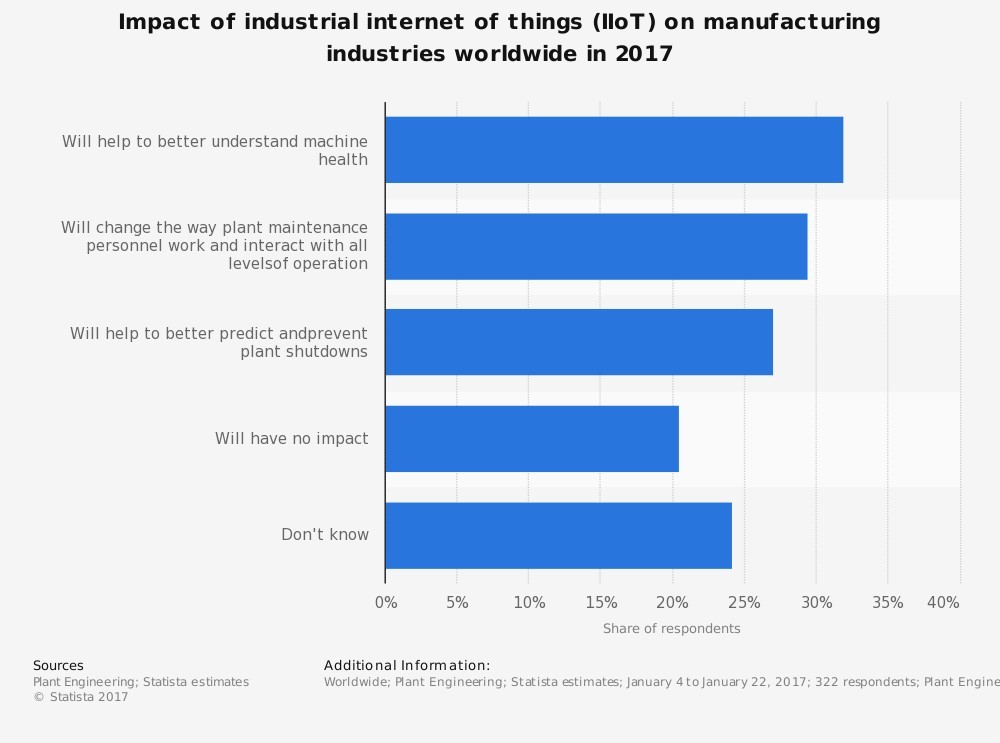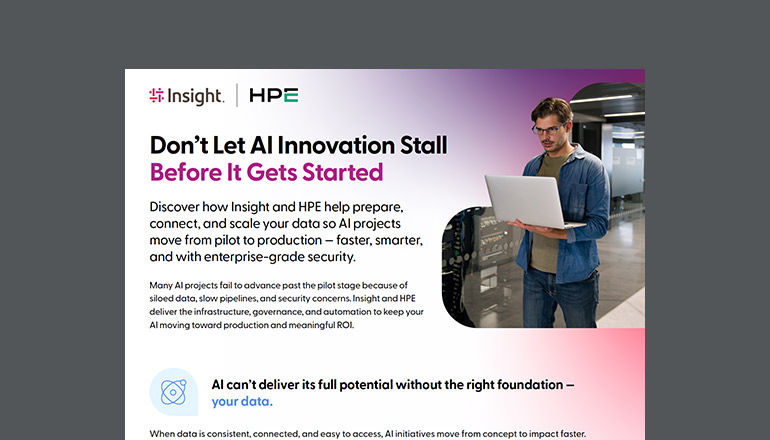Article The Industrial IoT: Why Building Your Smart Factory Can’t Wait
Smart, connected devices have pervaded in recent years, transforming our lives, from the way we hail a ride to how we turn on lights in our homes.
By Jillian Viner / 14 Mar 2018 / Topics: Storage Intelligent edge

Although the consumer market is booming with the Internet of Things (IoT), the most lucrative space for the IoT is perhaps in manufacturing. The Internet of Things initiated the latest industrial revolution, commonly referred to as Industry 4.0 — and the emergence of the smart factory.
A smart factory uses the Internet of Things, also referred to as the Industrial Internet of Things (IIoT), to create an intelligent, decision-making environment of connected devices and things with proactive, autonomous and analytics capabilities.
How manufacturers benefit from the IoT
To some extent, companies have been using the IoT for years. Expanded capabilities and migration to the cloud and edge computing have escalated the value of the IIoT. And this is arguably just the beginning.
 Figure 1
Figure 1
Whether a manufacturer is using the IoT or not, industry leaders have common expectations for what that level of connectivity can do for business. As shown in Figure 1, more than 30% of manufacturers surveyed believe the IIoT will help them better understand machine health in their factories. However, with roughly 20% believing the IIoT will bear no impact, company change-makers have a lot of work to do to educate leaders and prove the value of such an investment.
Manufacturers are beginning to adopt the IoT to help improve quality control, achieve operational efficiency, transform the customer experience and more. But manufacturers already vested in the IoT are seeing return on their investment in the form of improved product quality, greater operational efficiency and safety, better inventory tracking and more accurate demand forecasting. Some companies are also using technology as a differentiator to enhance customer experience.
What’s more, 61% of manufacturers who have implemented an IoT strategy believe “they have barely begun to scratch the surface of what IoT can do for their business,” according to Cisco.
Digital innovation is bringing tremendous disruption to traditional industries. And it’s an organization’s ability to evolve that will ultimately determine the fate of the company.
A heating, ventilation and air conditioning manufacturer partnered with Insight to transform its 100-year-old company and change the way it interacts with customers.
Today, the company is making its products smarter by embedding sensors into units. In 15-minute intervals, every unit on every building the company serves sends data points to the cloud, performs analytics and provides insight back to the company.
This has transformed the way the company maintains and provides support to its customers, shifting from schedule-based maintenance to predictive maintenance.
“This saves the company a tremendous amount of money on maintenance because they’re keeping the equipment running in a much more optimal fashion,” explains Mike Gaumond, senior vice president of services during a Technomics podcast. “But perhaps more importantly, it improves their customers’ experience because the customers aren’t experiencing downtime and failed units and emergency calls.”
Barriers to the IoT
Although the value of digital innovation is apparent, widespread adoption has been slow. A 2017 McKinsey Global Institute report revealed roughly half of manufacturers don’t have a digital roadmap. Let’s explore a few reasons for this.
For many organizations, the biggest challenge is available talent — they simply don’t have the internal expertise to plan and execute digital innovation initiatives. With continued strain on IT budgets, organizations struggle to both manage the priorities of today and invest in the talent needed to help them transform their business.
Driven by immediate goals of reducing costs and returns, some manufacturing companies have deferred technology investment. The average factory today is 25 years old, according to the McKinsey report, with machinery that’s going on nine years old. Before any plans of integrating the IoT can begin at these plants, they must first upgrade equipment to enable digital readiness.
However, lack of IoT integration isn’t necessarily due to an unwillingness to invest. Many organizations pursue digital innovation, but a large number of these projects are doomed to terminate. In fact, 74% of companies that begin an IoT initiative fail, according to the Cisco study. This can happen when projects go over budget, deployment times run long, interoperability issues occur across legacy platforms or planning and resources aren’t allocated appropriately.
Another reason organizations hesitate to invest in the IIoT is the speed of technology evolution. According to the McKinsey report, “The U.S. manufacturing sector’s relatively slow pace of digital adoption has been a drag on its productivity performance. Industry 4.0 can help companies up their game, and the stakes are higher than ever as the global marketplace grows more fragmented and fast-paced.”
How to overcome IoT barriers in your smart factory
Knowing where to begin and what to solve is the first step of a successful IoT journey. What are your short- and long-term goals?
Director of Insight Digital Innovation Jeff Dodge suggests starting with the data.
“The numbers don’t lie,” he notes. “The numbers don’t tell you the answer, but the numbers tell you where to start looking. You have to take a data-driven view to come up with a hypothesis of what you’re trying to solve. Innovative teams can work quickly to test and learn.”
Don’t feel held back by a budget. Although the rapid evolution of technology may be daunting to some, the quick churn of technology advancements also lowers costs as cutting-edge technology becomes more commonplace. This is true for some robotics and other analytics software — making the initial capital investments more palatable.
Dodge suggests businesses should be “setting up unique teams whose sole purpose is to innovate inside a traditional world. Because if they’re not testing and learning, if they’re not practicing that, if they’re not starting to build that DNA, it will be very difficult to move fast enough if they ever do get threatened.”
That said, recognize when you need outside help. Work with a trusted partner who specializes in IoT solutions and can help you plan, deploy and maintain with minimal disruption to your daily operations. Insight, for example, not only helps companies launch their digital innovation initiatives, but also helps train internal teams to sustain projects and ensure ongoing success.
And, as with any large initiative, proper planning is key. You need to take time to communicate with all facets of the business.
“The move to a smart factory isn’t a quick fix — and that’s really the point,” Dodge explains. “Implementing a robust IoT strategy is an investment of time and resources. But when it’s done right, you’re already ahead of the changing marketplace — and your competitors.”
Why the time for a smart factory is now
Digital transformation is no longer a wish list item — it’s a business imperative. Manufacturers have to be ready to answer accelerated product cycles, master agility for changing market demands and navigate fragmented markets.
“If you’re not actively using digital innovation to produce a better product, reduce operational costs or create better customer experiences with your brand, you can bet your competitors are,” Dodge says.
Integrating the IoT can help your manufacturing enterprise realize new revenue streams, monetize existing offerings and develop differentiated end-user experiences. In other words, digital innovation will help you maximize technology potential so you can manage business today and transform for the future.
See our list of top 10 IoT trends in manufacturing.







